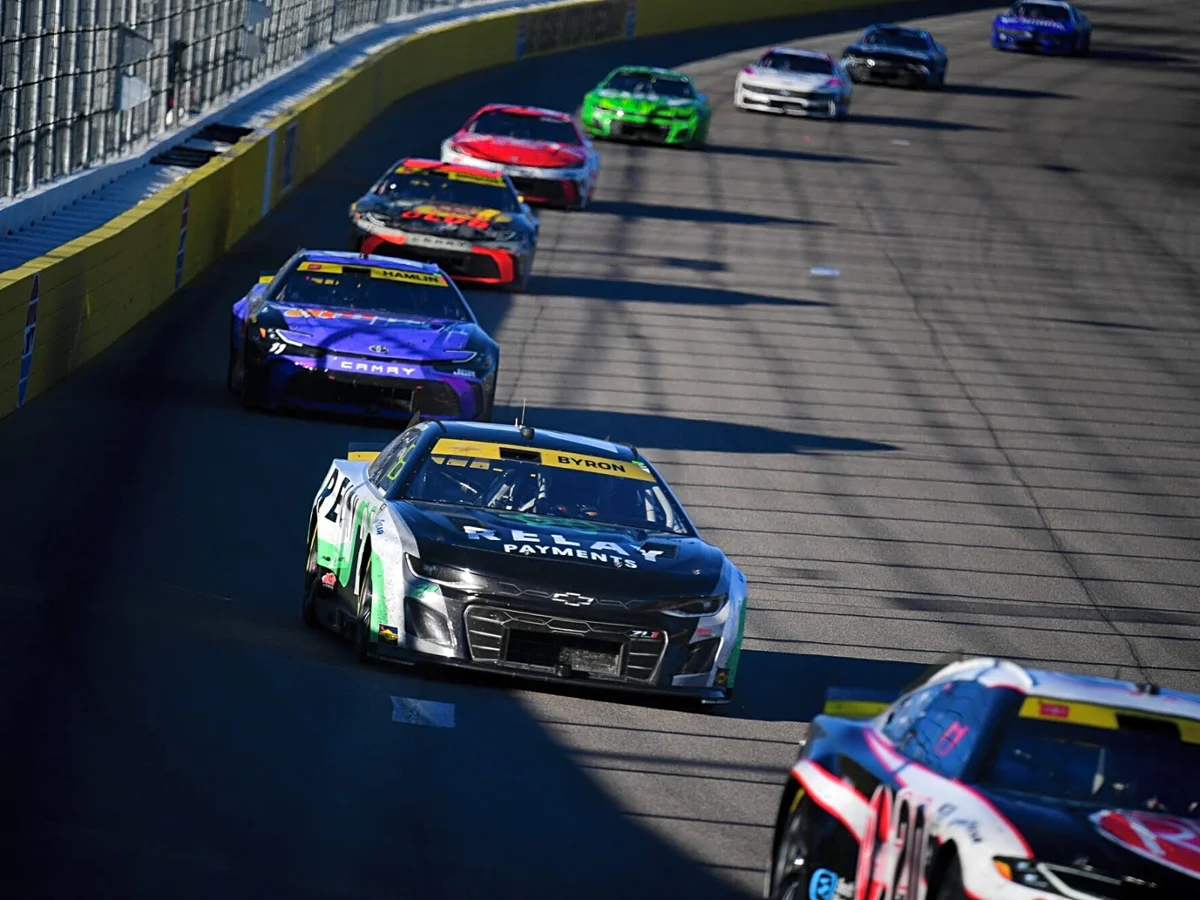The William Byron Vegas crash controversy has sparked intense debate following the dramatic collision between William Byron and Ty Dillon during the South Point 400 at Las Vegas. The incident, which unfolded with just over 30 laps to go, has seen blame shift from one side to the other as details about miscommunication and responsibility continue to emerge.
Collision at South Point 400 Raises Questions Over Responsibility
With approximately 31 laps left in last Sunday’s South Point 400, William Byron found himself fighting at the race‘s front while Ty Dillon, running a lap down in position 35, attempted to avoid finishing at the bottom of the leaderboard. Despite differing agendas, their paths disastrously intersected on the track, leading to a costly crash that eliminated both drivers from competition. The event quickly became the center of the William Byron Vegas crash controversy, with fans and industry insiders questioning how it could have occurred.
Kaulig Racing, with Chris Rice at the helm, immediately faced scrutiny. Rice publicly dismissed any claims that his outfit was at fault. Still, the backlash was swift, resulting in the abrupt termination of Dillon’s spotter, Joe White. The dismissal came without advance notice, adding to the frustration and confusion felt by White and the team.
Spotter’s Account Contradicts Official Narrative
After being let go, Joe White spoke out, aiming to set the record straight about the events at Las Vegas. White disclosed that he had traveled to Talladega before learning of his firing. Now back home, he took to social media to assert that responsibility lay not with himself or Kaulig Racing, but with Byron’s team for failing to properly communicate a crucial pit stop.
White explained that he personally informed Byron’s crew about Dillon’s scheduled stop. He highlighted a communication breakdown on Byron’s side, arguing that the message never made it to the No. 24 driver in time. White posted,
“Just to be clear, here is the story of what happened last Sunday. I did in fact go down and tell the spotter of the 24 that we were pitting, and he misinterpreted the information. That’s what happened.”
— Joe White, NASCAR spotter
White further clarified that in the chaos of the pit stop preparations, Byron’s spotter Branden Lines was not in his immediate line of sight on the spotter stand. This forced White to walk over and mouth the instructions, hoping the message was understood. According to White, this critical exchange was where the breakdown occurred, leading to catastrophic results for both teams.
Competing Explanations From the Drivers and Their Teams
In response to White’s claims, William Byron’s camp issued a strong denial. The No. 24 driver maintained that nobody provided a warning to his spotter regarding the incoming pit stop. Byron recounted that he observed no signal, such as a wave, that would have alerted him to Dillon’s actions. Simultaneously, Dillon commented that Byron was not close enough to spot a visual cue anyway, meaning the only way for the information to reach him was verbally via spotter relay.
The tension only intensified as conflicting accounts surfaced, heightening the distress and frustration among all parties involved. The controversy now centers on whether a communication error or a procedural failure led to the crash, making the incident a focal point for debate within the NASCAR community.
Broader Implications for NASCAR Communication Protocols
The fallout from the William Byron Vegas crash controversy is likely to influence how teams handle crucial race communication moving forward. With Kaulig Racing taking swift personnel action and Byron’s team firm in their denial, the focus on spotter responsibilities and protocol clarity has only grown sharper. The incident not only cost both drivers a shot at victory but has also brought to light the vital importance of clear, foolproof communication in high-stakes racing environments.
As the investigation continues and questions linger, the NASCAR world will watch closely to see whether any regulatory changes or best practices are adopted to prevent similar mishaps. In the meantime, the careers of drivers like William Byron and Ty Dillon, as well as professionals such as Joe White, remain subject to the intense scrutiny that comes with top-tier motorsports.
Just to be clear, here is the story of what happened last Sunday. I did in fact go down and tell the spotter of the 24 that we were pitting, and he misinterpreted the information. That’s what happened. https://t.co/af49xudlAO
— Joe White (@White_Joe47) October 16, 2025
